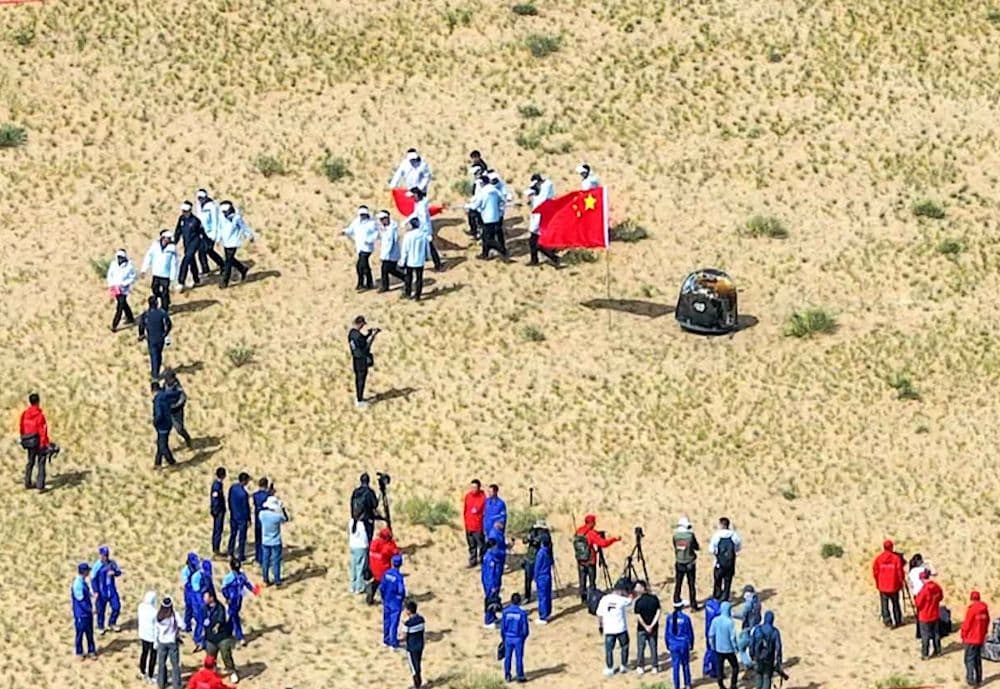A somewhat scorched Chang’e-6 return craft landed in Inner Mongolia yesterday, bringing with it the first rock and dust samples from the far side of the Moon – and hopes of unlocking some lunar secrets.
The China National Space Administration has now launched six lunar missions, the first an uncrewed orbiter launched in 2007. A probe followed three years later, to look for a landing spot for the subsequent spacecraft before heading off for an asteroid flyby. The Chang’e-3 became the agency’s first Moon lander in 2013, and included a rover for lunar exploration.
The Chang’e-4 made history in 2019 by becoming the first spacecraft to land on the far side of the Moon, with its rover subsequently exploring the South Pole-Aitken Basin and setting the scene for a subsequent sample retrieval mission.
However, the next mission was to the north of the Mons Rümker volcanic complex to the northwest of the lunar near side, where the module’s mechanical arm and drill gathered samples for return to Earth. Data from this spacecraft also detected traces of water in the rocks for the first time.
The sixth mission launched on May 3 with the far side in its sights, returning to the South Pole-Aitken Basin to collect material from the surface. A paper published in the journal Nature on June 4 confirmed completion of a two-day drilling and collection exercise, and blast off for the return journey.

Xinhua News Agency
Yesterday, Chang’e-6’s return capsule separated from the orbiter and entered the Earth’s atmosphere. The parachute was deployed at about 10 km above ground before touching down in the Siziwang Banner in Inner Mongolia. After recovery and processing, the capsule will be airlifted to Beijing and the sample container – which should contain around 2 kg (4.4 lb) of material from the surface and below ground – removed for storage and analysis.
Scientists are hoping that the samples will help explain differences between near and far side geology. Research could also lay the groundwork for China’s plans for crewed missions to the Moon by 2030.
“There are significant differences between the far side and the nearside of the Moon in terms of lunar crustal thickness, volcanic activity, composition, etc., especially considering that CE-6 landed on the South Polar-Aitkin basin, the special terrane of the Moon,” said first author of a paper accepted for publication in The Innovation, Zongyu Yue. “The CE-6 samples, being the first obtained from the far side of the Moon, are expected to answer one of the most fundamental scientific questions in lunar science research: what geologic activity is responsible for the differences between the two sides?”
Two more Chang’e lunar launches are expected to follow this latest successful mission, the first in 2026 and a final one with a lander, rover and robot in 2028.
Source: China National Space Administration
Source of Article